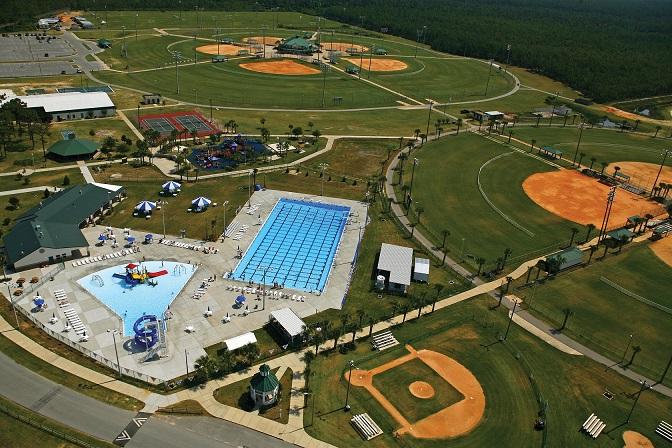
 It isn’t that Panama City Beach, Florida, is hanging out the No Vacancy sign when it comes to college students on spring break.
It isn’t that Panama City Beach, Florida, is hanging out the No Vacancy sign when it comes to college students on spring break.
It’s just that it’s making other groups, among them the sports tourism market, feel more welcome.
Following a particularly unsavory spring break season in 2015 that saw an enormous uptick in crime, particularly violent crime involving college students, the area has quietly retooled its marketing campaign.
According to an article in Travel Weekly, Visit Panama City Beach is marketing itself as a family-friendly destination in an advertising campaign that launched last month.
“We just want families to know all the great things that are going on for them,” Visit Panama City Beach CEO Dan Rowe told Sports Destination Management. “We’ve always been a family destination; it’s just that we were a family destination that also hosted college spring break in March.”
But if family travel, spotlighted in this 30-second advertisement, is one of the ways Panama City Beach is working to replace the college crowd, sports tourism is another.
"We want athletes to come here and bring their whole entourage," says Rowe. "Their parents, grandparents, brothers, sisters, everyone."
Visit Panama City Beach has a diverse portfolio of sports facilities on its website, including venues for golf, tennis, swimming and diving, baseball, tee-ball, softball and soccer. Fun fact: one facility, the HG Harders Recreation Complex, offers both a pond for model boats and an airstrip for miniature aircraft – something that may become an even bigger draw as drone racing picks up speed.
And right now, Panama City Beach has something else in its back pocket: an outdoor sports complex is under construction. The facility, projected to open in 2018, is expected to host soccer, lacrosse and flag football. That complex, a public/private partnership between Visit Panama City Beach, St. Joe Company and the Bay County School Board, will also bring a Kindergarten through eighth grade school to the destination.
 Designs of the village include synthetic fields that will allow continuous play without having to be rested or repaired after heavy use. Also on the drawing board are concession areas and tournament headquarters facilities. Lead designer The Sports Force will oversee the development and construction of the project and is adding nature and fitness trails to complement the village.
Designs of the village include synthetic fields that will allow continuous play without having to be rested or repaired after heavy use. Also on the drawing board are concession areas and tournament headquarters facilities. Lead designer The Sports Force will oversee the development and construction of the project and is adding nature and fitness trails to complement the village.
A full-size collegiate baseball field is expected to be included in the new facility, says Rowe, who is excited about bringing in college teams for spring training.
“We’re really adding to our market mix.”
Hicks notes that while Panama City Beach is already a hotbed for diamond sports, (home to Frank Brown Park with nine full-size baseball/softball diamonds designed for tournament level play, and two lighted tee-ball fields; as well as additional diamonds at Callaway Recreation Complex, Oakland Terrace Park and Gulf Coast State College, as well as others), the new sports complex will open up opportunities to host a huge variety of sports played on rectangular fields.
“We can keep sports here year round,” notes Rowe. “This is an all-American destination, and we love student athletes. It’s a place you come to as a family and everyone appreciates what your kid is going out on the field, but it also offers a great vacation after that’s over.”
The area hosted a full complement of events in 2015, including:
The EVP® Beach Volleyball Tour
Supercup of Watersports (personal watercraft competition)
Beach Blast (powered paragliding)
A-CAT North American Championship (catamaran regatta)

Minor League Paintball Classic
Grand Slam World Series of Baseball
USFA Fastpitch World Series
PCB Hurricanes Sevens Tournament
Endless Summer Soccer Classic
Ironman Florida
Panama City Beach Marathon
The Panama City Beach website also quotes event owners and rights holders, including Don DeDonatis, CEO of USSSA, who terms Panama City Beach “the ultimate venue for our sporting needs – excellent facilities, a beautiful beach, affordable housing, top-grade restaurants and entertainment for the whole family.”

To leave behind its reputation as a spring break party town, Panama City Beach also passed some new ordinances to make itself less hospitable to the college vacation demographic. Most notably, the ordinances, passed last June and July, forbid the possession or consumption of alcohol during March along an 18.5-mile-long section of the Panama City-area’s famed white sand beach. In addition, the bars’ last call will be 2 a.m. during March, as opposed to the usual 4 a.m. Possession and consumption of alcohol is also banned in commercial parking lots during March.
Passage of the spring break alcohol ban was controversial in Panama City, with opponents mainly arguing that it would hurt business and tourism, local newspapers reported. For example, a group called Citizens United for Panama City Beach, made up largely of hospitality workers, wore “Please save our jobs” T-shirts on the night the city commission took its most pivotal vote on the laws.
Rowe, however, says the laws were needed. And though the ban was enacted to discourage one type of tourist, he believes it creates an opportunity to reach out to another type. This includes sailing events.
“The sailing conditions here are second to none,” he notes. “That’s another area we’re looking to grow.”
The sports tourism aspect, already a key piece in the area’s economic landscape, is something he sees as an ongoing growth area in this city that welcomes 13 million tourists per year.
“We just want to encourage people to come out here, play a little baseball, lacrosse, whatever, and then go to our beach. We’re a great destination for sports.”

